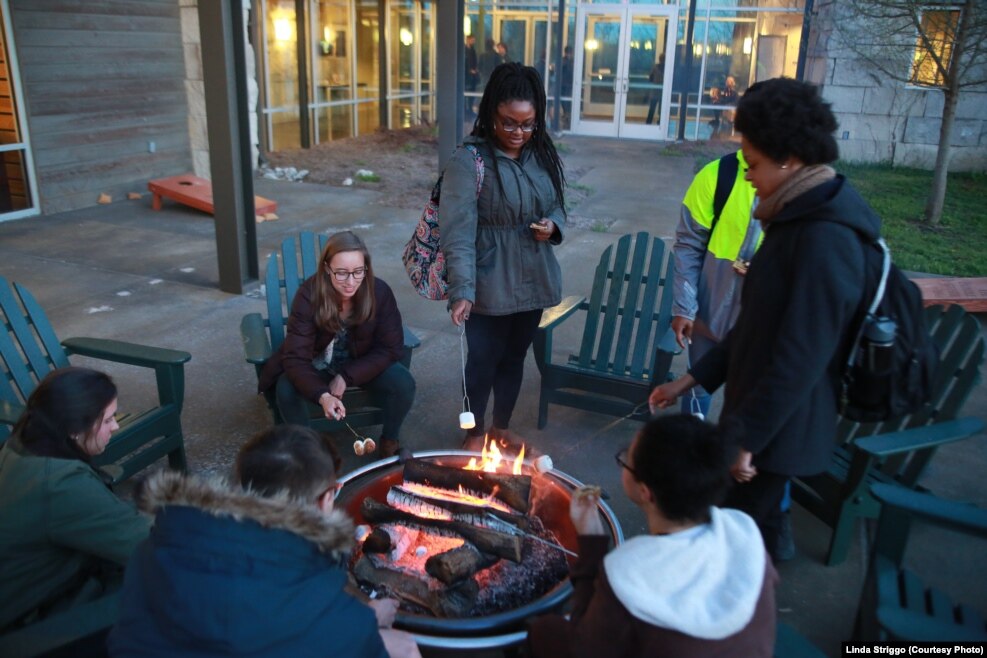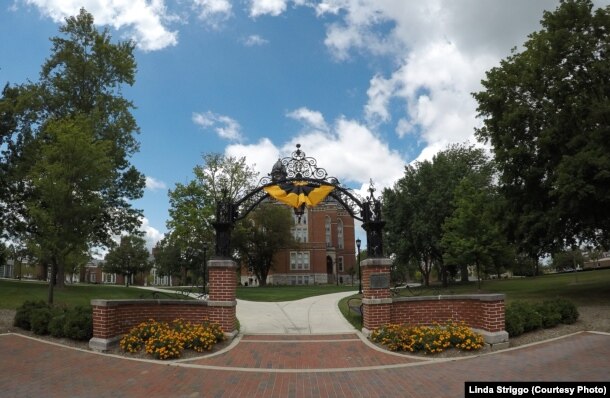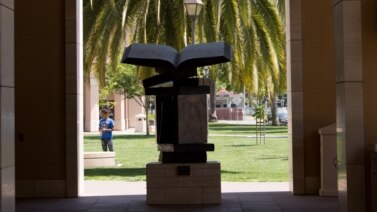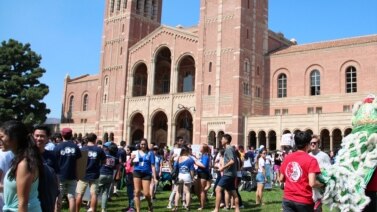
Higher education in the United States has never been more costly.
The College Board is an independent organization that supports the growth of higher education in the U.S. It says that the average cost to attend a public, four-year American college or university has increased more than 300 percent in the last 30 years.
Most American colleges and universities do offer some form of financial assistance to their students.
However, not all schools offer aid in the same way, and not all students are able receive the same kind of aid, says Loutfi Jarari. He is the associate dean of academic life and director of international recruitment at DePauw University, a private liberal arts college in Indiana.
Jirari says there are several types of financial assistance that colleges and universities offer students. There is aid that schools award to students with strong academic records. Schools also give special awards to students who are especially skilled at a sport, musical instrument, or other activity.
Jarari says the financial aid process can be complex, no matter what kind of assistance a student is seeking. It demands just as much attention as any other part of the college application process.
Students should consider several things before sending in any aid application materials, Jarari says.
For example, there are two main types of colleges and universities in the United States: public and private. Public universities are controlled by the states in which they are located. Private schools are independently operated.
What does this mean in terms of applying for financial aid? For both domestic and international students, Jarari says, there is a world of difference. He should know; he was once an international student himself. Born in Morocco, Jarari attended one year of college in his home country before finishing his higher education at Southern Illinois University, a public research university.
He says most public American universities do not offer any financial aid to international students. That is because those schools have special responsibilities to students living in-state.

“State universities have to serve the needs of the students in the state and the students in the U.S. first and foremost,” Jarari told VOA. “They are, of course, very, very open to having international students. But they are not able to give financial aid because they just don’t have that … for international students…Private universities don’t have to follow everything that is dictated by the states.”
So, Jarari says, the first step for both domestic and international students should be to ask what a school offers. He suggests contacting schools’ financial aid offices directly.
Applicants can get answers to questions they may have about the school’s financial aid availability. Jarari also notes that financial aid offices and admissions offices often work together. Any time an applicant contacts and communicates with a school directly, the school sees it as a good sign.
“When they ask questions…we give them points,” Jarari said. “That is a sign that the student cares about the university, and for us, we use those points to decide admission and also to decide scholarships.”
Jirari says that students usually apply for financial aid from a university at the same time that they apply for admission. This is typically in the fall term of their final year of high school.
American citizens can apply for financial aid from both the U.S. government and their college or university of choice. They do so by completing a Free Application for Federal Student Aid, or FAFSA.
International students must apply for financial aid through one of two other methods. They can use the College Board’s College Scholarship Service, or CSS, Profile. They can also use the International Student Financial Aid Application. Almost all U.S. colleges and universities use at least one of these methods to determine how much aid they will give to students, Jirari says.

The main difference between the two is that the CSS Profile costs about $25 for the first school students apply to, and about $16 for each additional school. The International Student Financial Aid Application is free. But Jirari says that neither method is necessarily better than the other.
He says that the FAFSA, the CSS Profile and the International Student Financial Aid Application all ask for the same kind of information. That information includes detailed proof of how much money, property and other assets a student’s family possesses. They also ask students to report the number of siblings a student has so schools know if their family is supporting more than one college student.
Jirari notes that completing these application materials correctly is very important. For example, students must make sure that all their family’s financial information is reported using the value in American dollars. Otherwise the student risks making it appear that their family is wealthier than they actually are.
Also, he says, students must make sure all the documents they provide the school match the ones they use in their visa application. If a student does not tell the full truth on every part of their application, the school can and will find out.
That can create serious problems.
“I’ve seen so many instances for both domestic and international students where students might try to hide an asset, thinking they will get more scholarship,” he said “But what that causes is for us to see that student is being untruthful. And in a lot of instances we will deny that student.”

In the end, schools do not want money to be a barrier to getting an education. They will give as much aid as they feel is reasonable, Jirari says. But students must fully understand how much a college or university costs.
He notes that some schools only list their basic costs of attending classes on their websites without including other costs, such as housing. That is another reason why student should ask financial aid officers questions during every step of the process.
The student can then compare how much a college or university truly costs to how much aid they are offering.
I’m Pete Musto. And I’m Dorothy Gundy.
Pete Musto wrote this report for Learning English. Ashley Thompson was the editor.
How common is it for colleges and universities in your country to offer financial aid? What is the process of applying for financial aid like? We want to hear from you. Write to us in the Comments Section or on our Facebook page.
Words in This Story
academic - adj. of or relating to schools and education
recruitment - n. to find people with the qualities that are right, needed, or appropriate for a company, school, organization, or the armed forces and get them to join
application - n. a formal and usually written request for something, such as a job, admission to a school, or a loan
domestic - adj. of, relating to, or made in your own country
world of difference - idm. a big difference
dictate(d) - v. to make something necessary
admissions - n. the act or process of accepting someone as a student at a school
scholarship(s) - n. an amount of money that is given by a school or an organization, to a student to help pay for the student’s education
asset(s) - n. something that is owned by a person or company
sibling(s) - n. a brother or sister
instance(s) - n. an example or single occurrence of something


